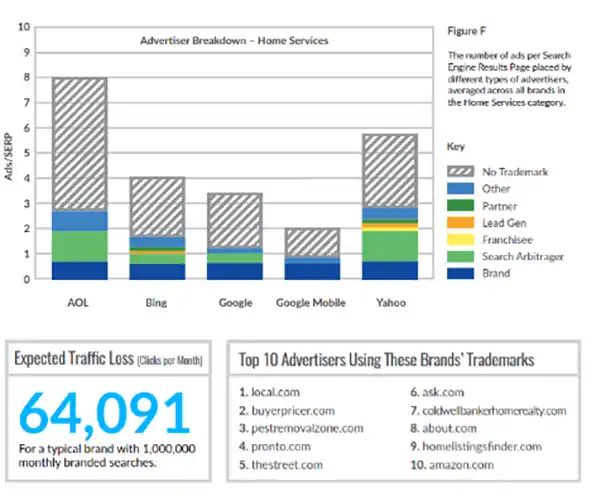Navigating the Legal Terrain: Understanding Trademark Bidding and Its Implications in the Digital Age

Introduction
In the constantly changing digital age, businesses strive to establish a formidable online presence through innovative marketing strategies. One such tactic that has garnered both advocates and detractors is “Trademark Bidding.” This practice involves utilizing trademarked keywords to trigger sponsored ads within search engine results or pay-per-click (PPC) campaigns. By employing brand names, often belonging to competitors, advertisers attempt to draw traffic to their products or services.
However, the legal intricacies surrounding this controversial advertising practice warrant thorough exploration, as they encompass profound implications for businesses and consumers alike.
I. Deciphering the Enigma: Trademark Bidding

Trademark Bidding, though not ordinary in the realm of digital marketing, demonstrates a calculated dance in the virtual marketplace. Advertisers artfully exploit brand names, emblems, or logos, strategically positioning themselves before the gaze of potential customers.
They draw them into their tempting domain, by integrating keyword-targeted advertisements with users’ search queries, Yet, the implications of such intricate operations are far from superficial.
II. The Legal Quandary: Boundaries of Fair Use
It stumbles upon the edge of legality, presenting a complex challenge for legal minds to navigate. At its core, this marketing practice contrasts the ideals of fair competition and trademark protection, creating an uncertain balance between rivaling commercial entities.
Whilst some vouch for its legitimacy as a customary facet of commerce, others vehemently contest its ethicality, criticizing it as a trick that damages the sanctity of brand integrity.
III. Navigating the Trademark Infringement Waters
The legal landscape surrounding it is filled with complexity, necessitating a discerning eye to identify its subtle nuances. At times, the boundaries between permissible marketing operation and outright infringement become hazy, demanding a judicious evaluation of each case.
The use of generic or descriptive terms might not instigate significant arguments, but when advertisers employ exact brand names as keywords, legal dangers spring up. Courts, vested with the herculean task of settling disputes, try to dissect the intent of the advertiser, the likelihood of consumer confusion, and the strength of the trademark.
IV. The Impact on Brand Owners
For brand owners, its consequences are not to be treated lightly, resonating with the resonance of an ageless symphony. Rival competitors, experts in the art of lexical prestidigitation, secretly capitalize on their brand names to divert potential customers toward their offerings.
Alas, such treacherous schemes result in lost revenues and diminished brand loyalty, casting an ominous shadow upon the sacred institution of intellectual property rights.

To combat these vicious schemes, brand owners must remain steadfast in their pursuit of robust trademark protection and engage in vigilant monitoring of online expansion. In this epoch of relentless digital revolution, protecting the walls of intellectual property emerges is pertinent to ensure everlasting cherished brands.
V. Consumer Conundrum: Betwixt Illusion and Reality
For consumers navigating the complexities of the digital landscape, the realm of Trademark Bidding presents a state of uncertainty. Within the echoes of their earnest search queries reside sponsored ads, made to charm them into mistaking specters for authenticity. This distressing illusion builds an environment of mistrust, hampering consumer confidence and cultivating skepticism across the domain of digital commerce.
VI. Regulatory Challenges and Global Perspectives
In a world where virtual borders dissolve like morning dew, the regulatory picture surrounding it paints an astounding illustration of diversity. The extent of regulation spans continents, each brushstroke adding a distinct color to the tapestry.
While some jurisdictions press strict measures to check these arcane practices, others choose a neutral stance, enabling opportunist advertisers to apply exploitation with a carefree attitude. Such diversity encourages global entities to embrace the ever-changing nature of legal regimes and adopt adaptive strategies to navigate the wide variety of topography.
VII. Striking a Harmonious Chord: Preserving Equilibrium
Resolving the Gordian knot of Trademark Bidding calls for the balance, conducted by the staff of regulatory reform and technological enlightenment. Nurturing a wholesome digital marketplace necessitates a coherent unity between technology companies, advertising platforms, and lawmakers.
Armed with the guidance of stringent policies and safeguards, the occupants of the digital realm can remove the specter of abuse, ensuring a level playing field for all stakeholders.
Conclusion
Trademark Bidding, represents the dialectics between commerce and the integrity of intellectual property. To apprehend its complex depths, businesses and consumers alike must walk with wisdom and erudition.
As the digital age stroll along an uncharted trajectory, being conscious of Trademark Bidding’s implications becomes the center of progress. The balance of navigating the legal terrain must resonate with preserving equitable competition and safeguarding the walls of intellectual property rights. Only then shall the ripples of harmony traverse the length and breadth of the digital age, resounding in timeless joy.
- Introduction
- I. Deciphering the Enigma: Trademark Bidding
- II. The Legal Quandary: Boundaries of Fair Use
- III. Navigating the Trademark Infringement Waters
- IV. The Impact on Brand Owners
- V. Consumer Conundrum: Betwixt Illusion and Reality
- VI. Regulatory Challenges and Global Perspectives
- VII. Striking a Harmonious Chord: Preserving Equilibrium
- Conclusion










